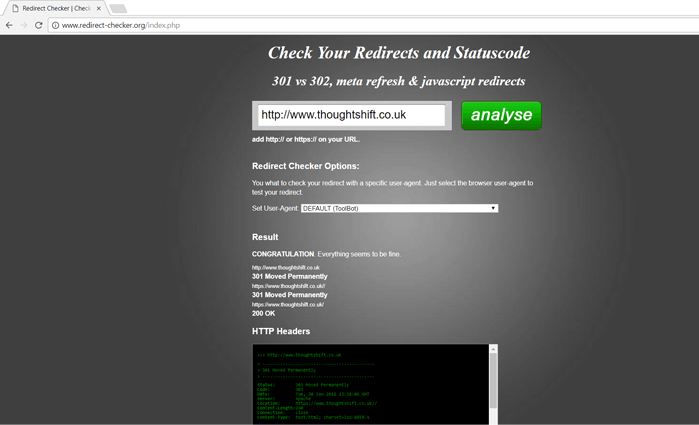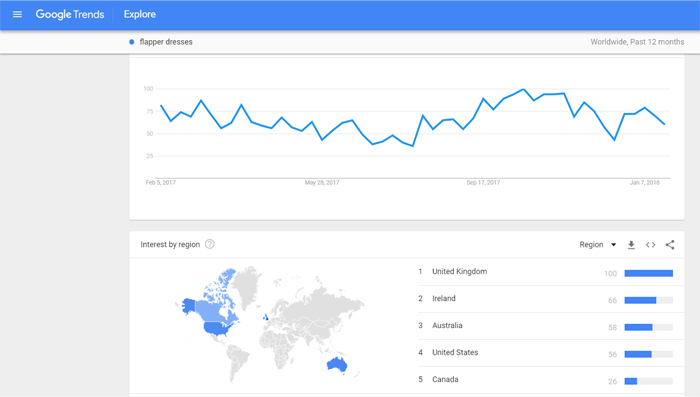15 Reasons Why Your Website Traffic Is Down
If you’ve had a sudden drop in your website traffic, or your traffic has been in decline for a while, there are a myriad of reasons. We take you through the 15 most common reasons why your traffic is down and how to fix each issue.
1. New website
Your beautiful new website is by far, the most likely reason why your website traffic has dropped off a cliff.
Pretty as it may be, if you’ve changed any or worst, all of the following, then you would have inadvertently removed all of your old pages from Google’s search index and that’s where all your traffic has gone:
- Layout
- Code
- Pages
- URLs
- Content
- Metadata
- Images
Recommended Fix:
SEO traffic often makes up the majority of a site’s traffic. So a SEO Migration Audit & Strategy will reverse engineer what content, links and code have changed and advise you how best to restore or resolve the technical SEO issues and get your new site re-indexed.
The quicker you act, the quicker your chances of redirecting your old high value links, adding back in any precious old content and regaining your lost traffic.
2. Analytics Tracking Code Removed
If you’re lucky, something awful may not have happened to your website at all and the best case scenario is that your Google Analytics Tracking Code has been accidentally removed from your site pages. Or just removed from some pages.
Recommended Fix:
Run your website through a free Google Analytics checker tool such as http://www.gachecker.com/
3.Metadata not transferred
This is one of the worst case scenario reasons your traffic has dropped.
You may not have even redesigned your website but simply moved to a better content management system, and your page title tags and meta descriptions unfortunately got lost in the move.
Google uses a combination of factors to decide where to rank your website in search engine results pages, but page 1 rankings are often heavily determined by having the keyword the user has searched for within the page title.
Recommended Fix:
If you’ve seen a sudden or more steady decline in traffic, then use The Wayback Machine Tool to check to see if your current title tag matches what it was before the traffic decline.

Simply enter your URL, go to a snapshot taken of your website before the drop and then if using the Chrome Browser, hover over the tab to read that page’s title tag.
If there’s a difference, update your title tags to reflect the old information. The more pages that are affected the greater the recovery of your traffic you can expect.
4. Change of domain name
So you’ve waited an eternity for your .com suffix of your domain name to become available and you’ve switched your .co.uk for a .com?
If you’ve now seen a decline in traffic, it could be that you have a top level redirect in place but not at a sitewide level.
Recommended fix:
Go to a deeper page on your site, one that is 1 or 2 levels down such as www.yourdomain.com/level-1 or www.yourdomain.com/level-1/level-2.
Now, in your browser address bar, swap in your old domain name (such as swapping .com for .co.uk) www.yourdomain.co.uk/level-1/level-2 and see if the old URL redirects to the exact same page on your new domain.
If you find a 404 error or 500 error then you’ll need your web development team to set up permanent redirects for each URL and that should recover your traffic.
If you don’t have any redirect errors, then consider the main geographical locations of your traffic. If most of your traffic comes from the UK and you’ve gone global (from a .co.uk to a .com), you will now be slightly less relevant to UK searches but on the plus side, more relevant to non-UK countries.
5. Moving from HTTP to HTTPS
As the web gets more secure, many websites are moving to a HTTPS domain structure and therefore everything that applies in the above point can be used to check and fix any traffic losses after adopting a secure HTTPS structure from HTTP.
Another common issue of changing domain name, domain suffixes or moving from HTTP to HTTPS is that you are using temporary 302 redirects rather than permanent 301 redirects.
Recommended Fix
You can use a free Redirect Checker Tool to see if your redirects are permanent 301 redirects which makes Google happy and therefore protects your precious traffic, giving you a 200 status code.
If your URLs are redirecting correctly but only via the 302 temporary method, Google will NOT be passing on ANY of your hard-won domain and page authority from your old site URLs to your new site URLs.
Using 302 temporary redirects is like removing all the link value of your website lifetime in one fell swoop, so if you find your URLs set up this way, you’ll need to work with your web development team to make these 301 permanent redirects as soon as possible and your traffic will start to recover.

6. New information architecture
If you’ve been busy improving the user experience of your site and made any changes to your URLs, navigation, internal links or sitemaps without considering the impact to your SEO, then that’s a likely reason for a traffic drop.
Recommended fix:
Reverse engineer what changes were made between the traffic peak and current traffic.
It can take search engines weeks to crawl your site and re-index it
Then also add in any changes made the month before the traffic peak as it can take search engines a number of weeks to crawl your site and re-index it accordingly. So there may have been changes made when you traffic was at its highest that caused the most detrimental impact.
Once you know what the changes are, you can then compare the changes made to the corresponding traffic volumes of the landing pages affected in your Google Analytics.
Armed with this evidence, you can then take steps to rectify the situation by incorporating previous copy or adding in redirects if relevant using all the fixes from the previous points.
7. Competitor SEO activity
Now it could be that the reason for your website traffic decline has nothing to do with what you’ve done, but is completely down to what your competitors have been up to.
You could be getting 100 times less the available search volume
If your competitors who compete on page 1 of Google for the same keywords as you, have improved their search engine optimisation by pushing themselves up the rankings, you will have been pushed down.
Unfortunately, the lower you rank, the lower of the share of search traffic you will get and that could be the reason behind your traffic loss.
Our 200,000 hours of digital marketing expertise tell us, that if you’re at the bottom of page 1 of Google for your keywords, you could be getting 100 times less the available search volume compared to being at position 1.
Recommended fix:
You’re going to need to up your SEO game at a scale greater than your competitors to outrank them, enjoy the dizzying heights of page 1 Google rankings again and win your lost traffic back.
8. Lack of SEO
If you paused your SEO campaign a few months ago, or reduced your focus on SEO then your site could’ve well slipped down the rankings and on to page 2 or beyond!
Whilst dropping from the top of page 1 to the bottom of page 1 (position 1 to position 10), falling down to page 2 (position 11-20) or further could completely turn off your organic traffic.
Recommended fix:
If you’ve previously invested in SEO, you’ve probably got a lot of the technical and onsite content basics covered. But if no-one’s been out there winning online PR coverage for you or gaining high value links back to your site for a while, this is the priority area to look to restart.
It’s not necessarily about volume either. It would be far better to regularly gain a handful of high authority links to the specific landing pages that drive the most traffic and sales.
9. Removal of links from high domain sites
Sometimes it’s not you, its them. Sometimes a high domain authority link from a magazine or university that you’ve had for years is removed without warning.
Maybe they updated their website, maybe they didn’t do a correct SEO migration, but the loss of that very high value link could be enough to knock you off your top spots in Google.
Of course, they won’t let you know they’ve even done it either so it may be a while before you even realise and can do anything about it.
Recommended fix:
Use link reporting tools to monitor your backlinks and take immediate action when any inbound links are lost. Either requesting the link be re-added or prioritising new offsite SEO strategies to regain another high value link of equivalent value before it impacts your traffic.
10. Search behaviour trends
A decline in website traffic may also be down to changes in search behaviour over time. If you’ve maintained your top positions in Google and traffic has been going down it could be that the language your customers use has changed.
Or the market had a boom period and you reaped the benefits, but now the market has moved on to the next shiny trend and there is simply less customer demand for what you’re offering.
Recommended fix:
Use the free Google Trends Tool to explore topics related to your industry to see how the search behaviour for different keywords changes over time.

Also consider how seasonal search behaviour may impact your website traffic. If you sell BBQs and you’re looking at year on year traffic being down, was the weather amazingly hot at the same time last year, when this year it’s damp and cold. Try out this free Weather History Tool to compare past performance.
11. Running paid campaigns without correct tracking
Another common reason why traffic is mysteriously down compared to previous years is that paid advertising campaigns were being run without AdWords being linked to Google Analytics.
Recommended fix:
Take a look at your Google Analytics traffic reports over a longer period of time to see if there was a sudden uplift in traffic before it later dropped off.
Also, see if you can spot any “(Not Set)” traffic sources in your SEO traffic, this is typically where any non-linked Paid Search traffic will be hiding. You can find Not Set traffic in Google Analytics > Acquisition > All Traffic > Channels > Organic Search Report.
12. Creating new international websites
Heading out world-wide on a multi-territory expansion programme with lots of exactly mirrored websites on local country domains is a sure-fire way to kill off your UK traffic.
You’re basically creating lots of duplicate content and Google will remove the version(s) of your website that it believes are the copies. This may well not be the correct country in the correct location.
Recommended fix:
You can add Rel Canonical Tags to tell Google which country each website relates to. You will also need separate local search campaigns for each country you wish to target.
If you’ve not yet embarked on your international website expansion, a local country domain strategy may not be the best option for you.
A global .com international architecture with country specific sub folders would be significantly more cost effective for your international SEO in the short term.
13. Google Algorithm Update
Google Panda and Google Penguin Updates utterly decimated a lot of website traffic a few years ago. Even now, Google is continuously making enhancements to its algorithm that can impact your website traffic.
You should only be concerned with this if you’ve ever used any unscrupulous SEO methods, or your site isn’t yet optimised for mobiles.
Recommended fix:
Run a free Google Speed Test on your site to see what Google recommends you should improve on your site. If your site gets a score of under 50/100 for desktops and mobiles then your current website is likely harming your traffic and migrating the best bits to a shiny new high performance site should be your next priority.
14. Facebook Algorithm Update
With the #Facebookapocalypse darkening our doors due to the impending removal of branded posts from our feeds, it demonstrates the rise in importance of Facebook’s Algorithm.
If your brand relies on organic Facebook posts as a top source of website traffic, then the Facebook News Feed Update could well reduce website traffic levels. If you’ve been having conversations with your commenters, then the good news is your visibility and subsequent traffic won’t likely be affected by this update.
However, even if your organic posts already have high levels of engagement so they will remain in their buoyant positions at the top of your customers’ feeds, there is potential to be affected by a future Facebook Algorithm Update.
Recommended fix:
If you’ve been gathering likes on your posts rather than having meaningful conversations, or are keen to take a glimpse inside the mind of Mark Zuckerberg future plans for Facebook. Then Speaking Human has suggested that this latest move by Facebook, could be an opportunity for us all to move from “The Dopamine Economy” to “The Oxytocin Economy”.
A place where rather than creating communications based on instant gratification, our social media interactions could evolve to provide real value and human connection.
15. Marketing spend changes
The often over-looked reason why website traffic has dropped are changes to other non-digital marketing activities.
If the budget, activity or results of any of the following marketing channels is different to the time before the traffic dip, then that’s the likely cause:
- TV advertising
- Outdoor advertising
- Press advertising
- PR
- Catalogues
- Leaflets
- Inserts
- Sales Team
- Exhibitions
Recommended fix:
Review your other marketing channels and see what changes have been made to your marketing mix. It may be that whilst your magazine competition drove a lot of traffic to your site, the visitors didn’t convert into sales and so the loss in traffic isn’t so important.
Whereas if you’ve noticed a decline in traffic and sales ever since you stopped that outdoor ad campaign, then it could be time to increase your marketing budget again, or change how you’re investing it now.
To find out what the most profitable mix of digital marketing channels are for you, ask us for a free digital marketing analysis.

